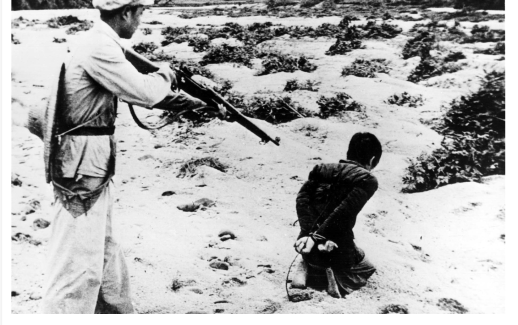The Russians are aiming Shahed-136 drones at Ukrainian energy nodes, buildings, and other infrastructure items, such as communications. The Shahed-136 suicide drone uses commercially available GPS as a guidance system, making it susceptible to jamming devices.
In December 2021, Israel’s Jerusalem Post published a well-informed advance warning of the capabilities of Iran’s Shahed-136 including longer range, missile use, and concealed, mobile truck-based, multiple launch systems. Today, the same source offered air defense recommendations to Ukraine for the “multi-layered integrated air defenses it needs.” Many of the means mentioned, compared to the relatively inexpensive Shahed-136 create an imbalanced tax on Ukraine’s air defense resources.
And in June 2022, authors John Hardie, Ryan Brobst and Behnam Ben Taleblu at Breaking Defense warned in some great detail that Ukraine’s supporters should help Ukraine prepare for the use of Iranian suicide drones, loitering munitions, and possible radar-targeting munitions. They also recommended re-establishing the U.N. arms embargo on Iran.
Earlier than all of the above sources, on January 25, 2022, the Strategy Shelf advocated for early-implementation of air defense systems on behalf of Ukraine as a means of humanitarian aid to protect civilian life and infrastructure.
Stopgap, it is our assessment that a high-value target-centric defense and layered approach will help balance the resource equation in Ukrainian air and object defense against Iran’s low cost drones. Ukrainian forces no doubt need more electronic warfare and drone jamming tech with controllers communicating with early warning observation and radar sites radiating out from high value target areas. These should be deployed to encircle energy, defense, communication, health care, transport, supply, and other infrastructure targets.
Building rooftops and nearby high points could also use drone jamming and EW tech in addition to sharpshooters strategically placed for coverage of civilian areas. Tracers and possibly infrared will help sharpshooters and jammers (respectively) to see and kill drones at night. Offering incentives and rewards to all who support Ukraine to introduce low tech methods of killing Russia’s drones, conditioned on training on how to identify the drones used by Russia, could be of value. The more threats to the drones, the greater the cost of deploying and employing them.
The issue of truck concealment brings to light the need to identify drone-servicing truck trailers by contrasting their presence and profile against past trucking routes or routines, then finding ways to further identify a truck’s behavior, purpose, location, and features contrasted with other trucks used in the areas of likely launch. This may aid in predictive surveillance priorities supporting air defense and could even be a private sector OSINT task.
Iran’s supply of Shahed-136 drones targeting Ukrainian civilian targets that are financed by the U.S. and international community as U.N. recognized humanitarian and self-defense aid to Ukraine arguably tread on a vital U.S. national interest justifying U.S. interdiction operations against Iranian drone shipments, manufacturing, and supply chains.
Separately, Iran should be identified as a sponsor of terror against Ukraine for supplying Russia with drones Russia is using to attack Ukrainian civilian lives, infrastructure, supplies, self-defense items, and other sovereign Ukrainian rights. Here, Iran becomes the terror sponsor and Russia their proxy. Such lawless terrorism under past circumstances justified military retaliation for terror sponsorship. Israel, for example, has in the past preemptively struck Syrian missile supplies capable of carrying chemical weapons, and sites supporting Iranian sponsored Hezbollah inside Syria.
In March 2022, Ynet News reported a strike on an Iranian drone facility, possibly by Israel, to preempt Iran’s use of drones in an ongoing campaign of Iranian proxy attacks on Israel. In August, the Iranian Army boasted of an underground drone base at an ‘undisclosed” location, touting its growing drone arsenal. A video purports to show it here:
The Iranian army has unveiled an underground military base on the second day of its countrywide drone war games, featuring its latest unmanned aerial vehicles. pic.twitter.com/6Z1lScPe0a
— Iran International English (@IranIntl_En) August 25, 2022
With U.S. lend lease aircraft or a “loan a drone” program, perhaps Ukraine could do the same if the U.S. prefers not to do it itself, however justified that would be.
It is our assessment that the U.S. has the right to interdict the integrated supply chain of Iranian drones, munitions, and war tech used to terrorize civilians in Ukraine and take down their vital infrastructures. The U.S. is financing the Ukrainian people with multipurpose aid to help them remain alive and free, the investment in which is a vital national interest. The U.S. need not sit by and see its vital national interest wasted by terrorist vandalism, sabotage, and killing sponsored by Iran against the Ukrainian people and their sovereign state.
Such U.S vital national interests include the goodwill and solid alliance with Ukraine as a fellow free nation in the world as a matter of international freedom to form international alliances. Likewise, it must be remembered that there was evidence “that the Iranian Revolutionary Guard Corps (IRGC), through its special Quds Force, has provided weapons, explosives, roadside bombs, and other forms of support to elements of the Afghan Taliban,” as early as 2010, and that Iran likely provided terrorist supplies for sticky bombs that destabilized Afghanistan’s political structure at great loss to the investments of the United States and NATO allies in Afghanistan.
Shall we allow them to do it again in Ukraine and do nothing? That would not be a good strategy for protecting U.S. interests going forward.
Finally, the Iranians have opened a drone factory in Tajikistan for surveillance drones, however, it must be determined if the same factories are being used to produce the Shahed-136 and like drones and munitions for Russian use against Ukraine, then the right actions taken to stop such production.

